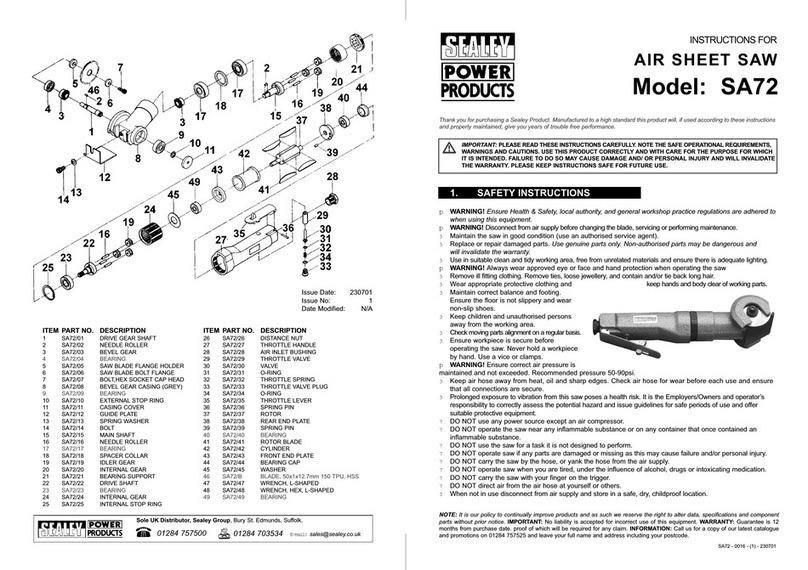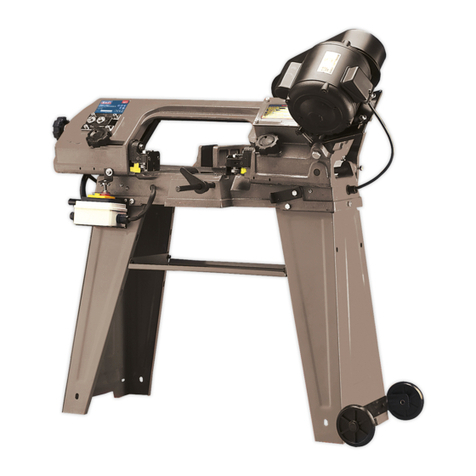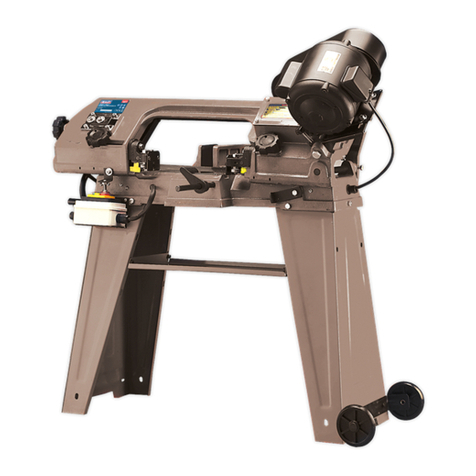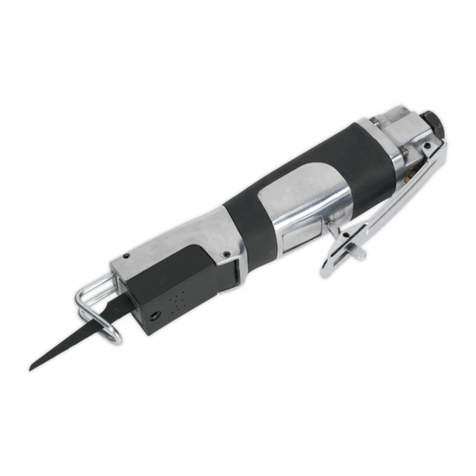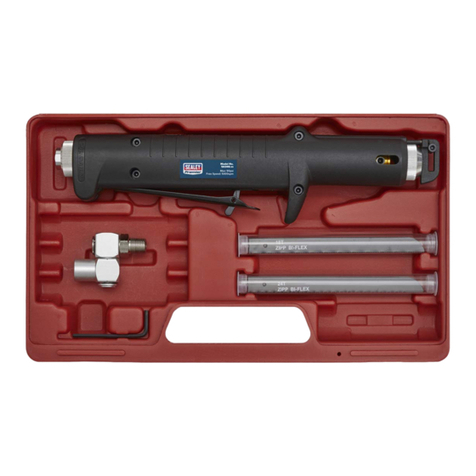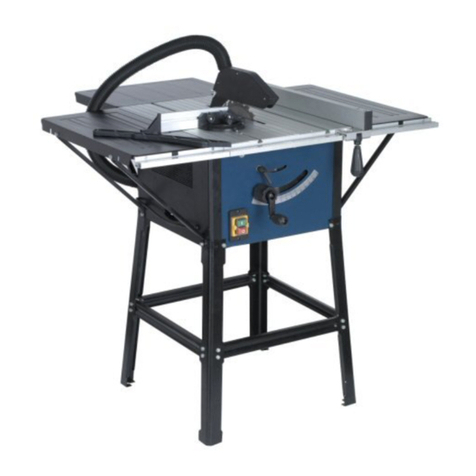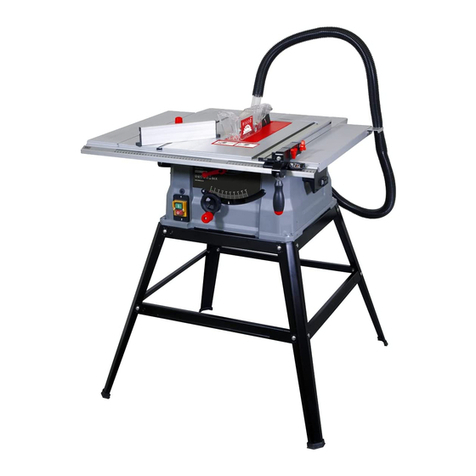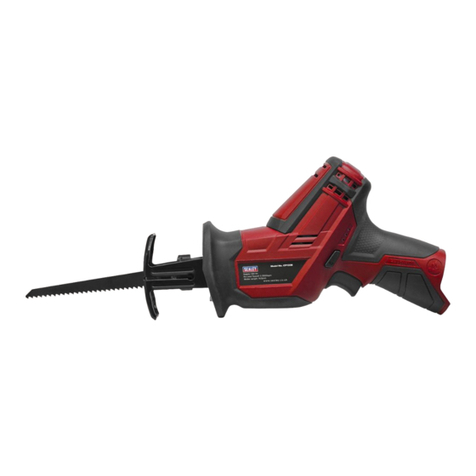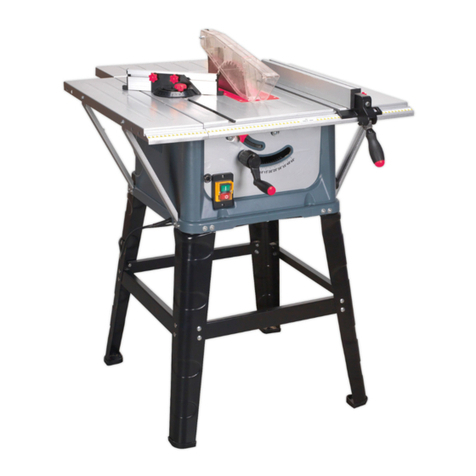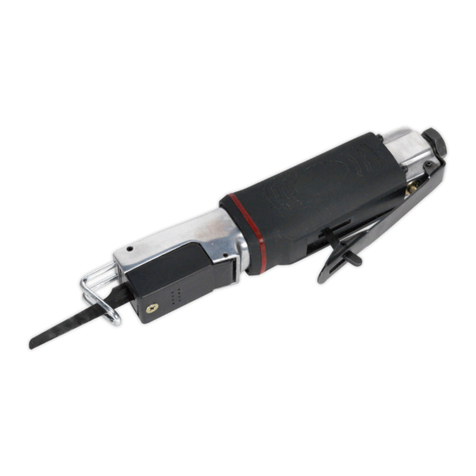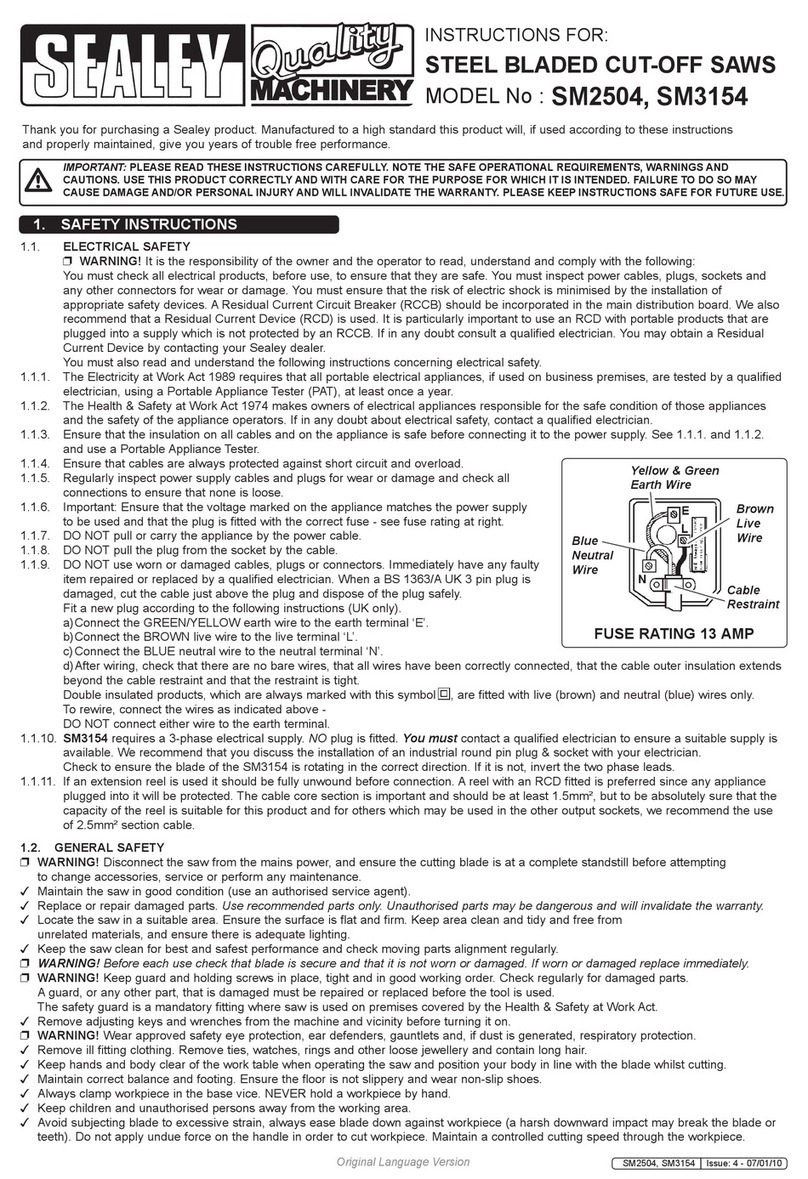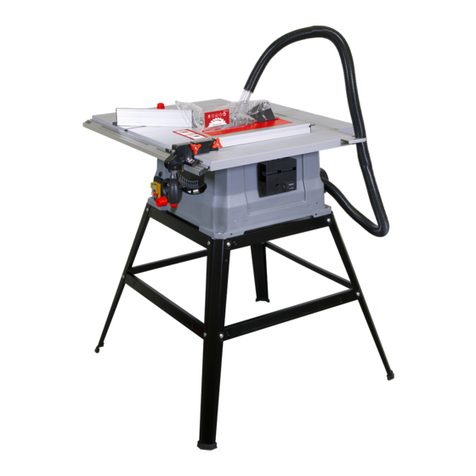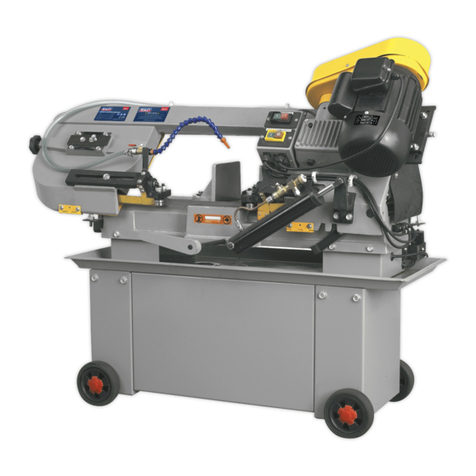
condition that may aect the power tool’s operation. If damaged, have the power tool repaired before use.
9Keep cutting tools sharp and clean. Properly maintained cutting tools with sharp cutting edges are less likely to bind and are easier
to control.
9 Use the power tool, accessories and tool bits etc. in accordance with these instructions, taking into account the working conditions
and the work to be performed. Use of the power tool for operations dierent from those intended could result in a hazardous
situation.
9Keep handles and gripping surfaces dry, clean and free from oil and grease. Slippery handles and gripping surfaces DO NOT allow
for safe handling and control of the tool in unexpected situations.
9 Have your power tool serviced by a qualied repair person using only identical replacement parts. This will ensure that the safety of
the power tool is maintained.
9Hold the power tool by its insulated gripping surfaces when performing an operation where the cutting accessory may contact
hidden wiring or its own cord. Cutting a “live” wire may make exposed metal parts of the power tool “live” and could give
the operator an electric shock.
9 Use clamps or another practical way to secure and support the workpiece to a stable platform.
9 Use appropriate detection equipment to track down concealed supply lines or consult the local utility companies. Contact with
electrical lines may result in re and electric shock. Damaging a gas line may lead to an explosion. Penetrating a water line causes
property damage and may cause an electric shock.
9Vibrations can be harmful to the human hand-arm system. Keep the vibration exposure time to a minimum.
9Clean the shank of the saw blade before inserting it. A dirty shank cannot be fastened securely.
9 Check the saw blade for tight t. A loose saw blade could fall out and injure you.
9 Before switching on the power tool, ensure that the insertion tool can move freely. If the device is switched on with a jammed
insertion tool, the resulting forces can be extreme causing the device to kick out sideways.
9DO NOT work on moistened material or moist surfaces.
9Only hold the power tool against the workpiece when the tool is switched on and running. Otherwise there is a risk of kickbacks.
9Make sure that the guide shoe is positioned securely on the contact face during sawing. A jammed saw blade could break or cause
a kickback.
8Keep your hands out of the sawing area. DO NOT reach underneath the workpiece.
9Keep your hands away from lifting rod and quick-release chuck. Crushing hazard upon contact with these components.
9 Ensure sucient ventilation.
9Regularly check the quick-release chuck for wear or damage.
9 Only use intact, awless saw blades. Bent and blunt saw blades could break or cause a kickback.
8DO NOT attempt to slow down the saw blade movement by pressing against the blade from the side once the device is switched
o. The saw blade could be damaged, break or cause a kickback.
9 Switch o the power tool when your operation is completed, but DO NOT remove the saw blade from the kerf until it has come to a
standstill. This serves to avoid a kickback, then you can put the power tool down safely.
9 Immediately switch o the power tool if the insertion tool gets jammed. The power tool can lash out to the side.
9 Wait until the power tool has come to a standstill, before putting it down.
9Only use the device SRS850 for sawing plastic, wood, metal and building materials using the suitable saw blade. The device may
be used for:
• Sawing work,
• Straight and curved cuts,
• Flush cutting of protruding workpieces
9 Whilst adhering to the technical data. We recommend using the power tool with original Sealey accessories.
8The device is not intended for processing glass or stone.
8Check the device for damages and proper functioning before each use. If you notice damages, no longer use the device.
8DO NOT use the device when the device or your hands are damp or wet!
9 Work on the electrical components must only be carried out by an authorised specialist company!
9 Warning of electrical voltage Before any work on the device, remove the mains plug from the mains socket! Hold onto the mains
plug while pulling the power cable out of the mains socket.
8There is a risk of a short-circuit due to liquids penetrating the housing!
8DO NOT immerse the device and the accessories in water. Make sure that no water or other liquids can enter the housing.
8 The insertion tool might still be hot after the application. Burn hazard when touching the insertion tool.
8DO NOT touch the insertion tool bare-handed! Wear protective gloves!
Warning! Hand injuries Crushing hazard near saw blade and guide shoe if handled without due care. Wear protective gloves!
Warning! Sharp object Parts of the saw blade are sharp. Risk of injuries if handled without due care. Wear protective gloves!
Warning! Toxic dusts! The harmful / toxic dusts produced during operation pose of risk to the health of the operator and persons in
the vicinity.
8DO NOT process materials containing asbestos. Asbestos is considered carcinogenic.
Warning! Make sure not to hit power, gas or water lines when working with a power tool. If necessary, use a pipe detector to check
the wall you want to drill in or slit open.
Warning! Risk of injuries caused by ying parts or bursting tool heads.
Warning! Dangers can occur at the device when it is used by untrained people in an unprofessional or improper way!
Warning! The device is not a toy and does not belong in the hands of children.
Warning! Risk of suocation! DO NOT leave the packaging lying around. Children may use it as a dangerous toy.
9Vibration emissions can cause a health hazard if the device is used for an extended period of time or if it is not properly handled
and maintained.
9 Keep a sucient distance from heat sources.
NOTE: If you store or transport the device improperly, the device may be damaged.
SRS850 Issue 1 28/09/18
Original Language Version
© Jack Sealey Limited

